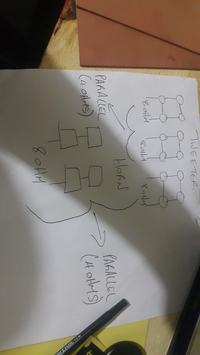Enzy
Advanced Member level 1

Ok thanks for the info. Why do you say the speakers are lightweight, Some people use some real heavy weight speakers with good size magnets and cone the speakers over themselves, or what would you consider powerful
- - - Updated - - -
I made an update to my preamp, how does it look

- - - Updated - - -
this is based on the info I got and it seems I have filters at each end of the circuit, with the 10k resistors and the 0.47uf cap doesnt that make a low pass filter @ about 33hz?
and the end with (3.3uf and a 50k pot) is a set up like a high pass filter but still with only 1hz passing through it?
- - - Updated - - -
for higher mid frequecies up to about 1kz and high wouldnt it be better to use a 100k pot and a 2.2nf capacitor at the output? At the input I dnt see the relevance of the 0.47uf cap
- - - Updated - - -
I made an update to my preamp, how does it look

- - - Updated - - -
this is based on the info I got and it seems I have filters at each end of the circuit, with the 10k resistors and the 0.47uf cap doesnt that make a low pass filter @ about 33hz?
and the end with (3.3uf and a 50k pot) is a set up like a high pass filter but still with only 1hz passing through it?
- - - Updated - - -
for higher mid frequecies up to about 1kz and high wouldnt it be better to use a 100k pot and a 2.2nf capacitor at the output? At the input I dnt see the relevance of the 0.47uf cap




